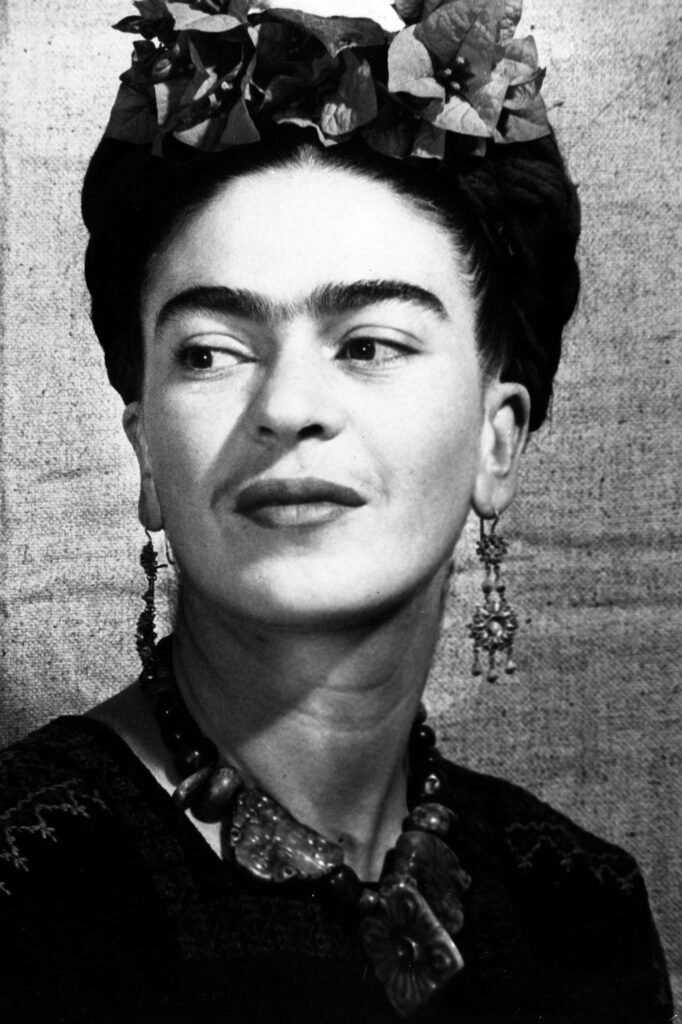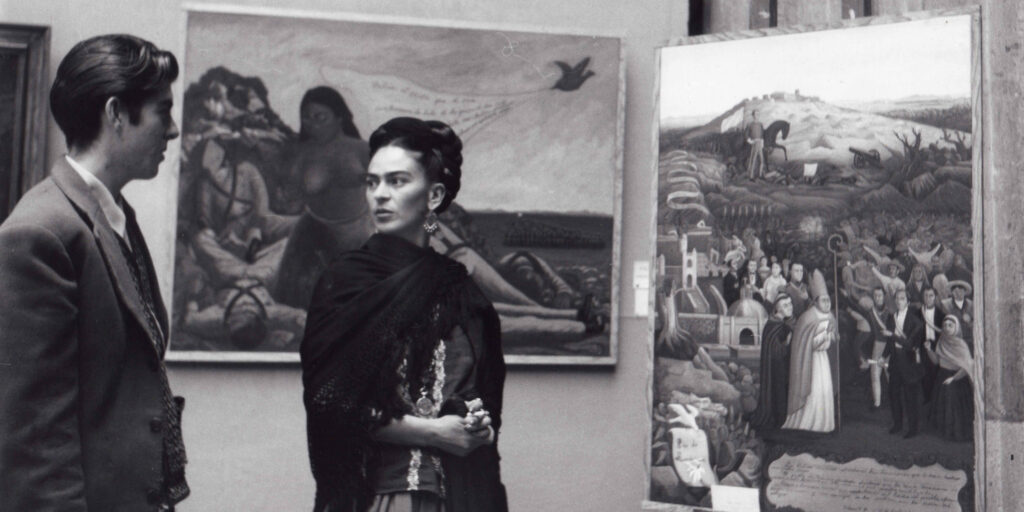Hey there, art aficionados! Buckle up for a captivating journey through the vivid palette of Frida Kahlo’s life and the emotionally charged canvas of My Birth. Frida, a force of nature born on July 6, 1907, in Mexico City, faced life’s hardships head-on, transforming pain into art. In this article, we’ll meander through her life, her impactful career, the essence of My Birth, and unearth more intriguing details about this iconic piece.
Who was Frida Kahlo?

Imagine a soul as vibrant as the colors she’d later splash across canvases – that’s Frida Kahlo. Born in the buzzing heart of Mexico City, Frida’s journey took a twist at 18 with a life-altering bus accident. The injuries from that incident would become threads in the intricate tapestry of her art. Painting became her sanctuary, a realm where she could translate her struggles into visual poetry. And then, of course, there was Diego Rivera, her partner in art and life.
Her Career

Frida’s artistic journey began during the slow dance of recovery after the bus accident. Her paintings, rich in hues and surreal imagery, became a visual chronicle of her pain and passion. Diego Rivera, a giant in Mexican art, played a significant role in shaping Frida’s artistic perspective. Her self-portraits, akin to an intimate diary, weren’t just reflections of her face but mirrors to her soul, blending personal struggles with societal narratives.
What’s happening in My Birth

| Artist | Frida Kahlo |
| Date Painted | 1932 |
| Medium | Oil on metal |
| Genre | Surrealism |
| Period | Modern |
| Dimensions | 30 x 34 cm |
| Series/Versions | Unique |
| Housed | Dolores Olmedo Museum, Mexico City |
Now, let’s dive into the core of this discussion – My Birth. Picture 1932, a pivotal year for Frida, as she gives life to a painting that’s not merely a depiction but an emotional expanse. This artwork delves into the realms of birth, life, and death, but with a Frida twist – she places herself at the center, capturing the visceral moment of her own birth.
The Visual Odyssey of My Birth
My Birth stands as a testament to Frida’s unfiltered expression. The surreal and dreamlike quality of the painting challenges the norms of artistic representation. But what makes this piece truly unique is the artist’s audacity to place herself within the throes of childbirth.
In this intimate tableau, we witness the opening of a uterus-shaped portal, a symbolic nod to the very essence of femininity and motherhood. Frida’s choice to paint on metal, rather than the conventional canvas, introduces a novel dimension – a cold, unyielding surface that intensifies the emotional and physical depth of the birthing scene.
Interesting Facts
Symbolism in the Details: My Birth is like a visual poem laden with symbols. The uterus-shaped opening isn’t just an artistic flourish – it’s Frida’s way of connecting with the profound aspects of motherhood and embracing her feminine identity.
Artistic Innovation: Frida, ever the trailblazer, decided to ditch the traditional canvas and opted for metal as her painting surface. The unconventional choice adds an extra layer of intensity to the emotional and physical aspects of childbirth, giving the piece a raw, unapologetic edge.
Bold Self-Portraiture: In an era where women were often seen but rarely heard in art, Frida breaks the mold by fearlessly placing herself at the epicenter of the birthing scene. It’s a bold move, challenging societal norms and asserting the power of women’s narratives in art.
Influence of Mexican Folk Art: My Birth is a love letter to Frida’s Mexican heritage. The lively colors and intricate details draw inspiration from traditional folk art, showcasing her deep connection to the rich artistic tapestry of her culture.
In the Depths of Frida’s Imagination
To truly appreciate My Birth, we must step into the labyrinth of Frida’s imagination. The painting isn’t merely a portrayal of a moment; it’s a visual exploration of life’s profound mysteries. The surreal elements in the composition take us beyond the realm of the ordinary, inviting us to question, reflect, and feel the pulse of existence.
As we gaze upon the canvas, Frida’s audacity to place herself in the vulnerable moment of birth becomes a statement – a declaration of the unbreakable link between life, art, and the artist. It’s as if she invites us to witness the raw beauty of creation, transcending the boundaries of time and societal expectations.
Frequently Asked Questions
What is the meaning of my birth by Frida Kahlo?
Since Kahlo’s mother had just passed away when she painted this piece, it is most likely her mother (the title lends credence to this interpretation) and herself as the infant. Kahlo says that even though she had just lost her own child, other people are covering her as a mother figure.
Why is Frida Kahlo so famous?
Known for her self-portraits and paintings, Mexican artist Frida Kahlo (1907–1954) is considered one of the most important figures in 20th-century art. She is especially well-known for her poignant self-portraits, many of which depict her cultural upbringing, political convictions, and physical hardship.
Conclusion
My Birth isn’t just a painting; it’s a portal into the core of human experience. Through Frida’s paintings, we witness the pain, beauty, and transformative power of childbirth. The canvas becomes a mirror, reflecting not only the physical act of birth but the emotional and existential dimensions that define our shared humanity.
As we peel back the layers of this masterpiece, we unearth more than just paint on metal. We discover Frida’s resilience, her defiance of artistic norms, and her unwavering commitment to authenticity. My Birth stands as a testament to the enduring power of art – a medium through which an artist can lay bare their vulnerabilities and, in doing so, connect with the collective heartbeat of humanity.
So here’s to Frida, her paintbrush, and the timeless tales she told on canvas. May My Birth continue to resonate, inviting us to explore the profound depths of our existence and celebrate the unbridled spirit of artistic expression.












